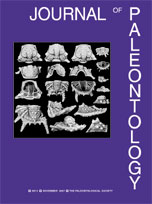Ostracod faunas from the Lower to Middle Ordovician rocks of the Argentine Precordillera Basin (Gualcamayo and Las Aguaditas Formations) are studied. A new family, Garcianidae, is erected. One new genus, Jeanvannieria, and six species are recognized, two of which are new (Jachalipisthia bicornata and Jeanvannieria bulbosa). The diversity and composition of the Precordilleran ostracods is evaluated on the basis of previous taxonomic analysis and the fauna studied here. The diversity is moderate, with a peak of 50 species during the early Caradoc. The composition of the fauna is characterized by the dominance of podocopes with a high percentage of binodicopes and a lack of palaeocopes, which is in agreement with a deep shelf environment. The carbonate slope setting of the Las Aguaditas Formation is the deepest environment yet found with Ordovician ostracods and records a relatively diverse fauna. The presence of Ectoprimitioides suggests biogeographic affinities between the Precordillera and Laurentia. The rest of the fauna contains a high percentage of endemic genera and a mixture of genera with several affinities, Baltic, peri-Gondwanan, and Australian.
How to translate text using browser tools
1 November 2007
ASSESSING THE BIODIVERSITY OF ORDOVICIAN OSTRACODS FROM THE ARGENTINE PRECORDILLERA
MARÍA JOSÉ SALAS
ACCESS THE FULL ARTICLE

Journal of Paleontology
Vol. 81 • No. 6
November 2007
Vol. 81 • No. 6
November 2007




